NEWS ANALYSIS – A wide array of armed Shia groups fought side by side in the recent recapture of Fallujah and its suburbs from the Islamic State (IS). Who are they and how will they shape Iraq’s political future?
Sinan Adnan
In late May 2016, a broad coalition consisting of several Shia paramilitary forces, Iraqi security forces and US air support launched a military operation to recapture Fallujah from IS.
In the wake of the 2003 US invasion and the consequent fall of the Sunni-dominated regime of Saddam Hussein, sectarianism has marred Iraq. By 2006 armed groups claiming to represent their respective communities fuelled sectarian conflict in a population divided largely between a Shi’a majority and a Sunni minority. In late 2012, the policies of the Shia-led government of then-Prime Minister Nouri al-Maliki sparked anti-government protests by Iraqi Sunnis. Sunni marginalization allowed IS to insert itself as the defender of Iraqi Sunnis and win a large swath of land in 2014.
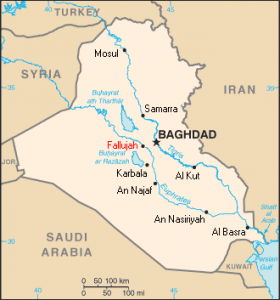
Fallujah in Iraq (map from CIA World Factbook, in public domain)
The city of Fallujah in predominantly Sunni Anbar province was the first major urban center to fall to IS (also known as ISIS and ISIL). The recent assertive presence of Iraqi Shia armed groups in the province has sparked media attention and a flurry of analysis. Some have played a role in the sectarian war of 2006 and 2007 and were also recently implicated in sectarian reprisal attacks against Iraqi Sunnis in Anbar, Diyla, and Salah al-Din provinces.1 The prominent role of top Iranian general Qasem Soleimani assisting some groups has highlighted Iran’s reach into the conflict and prompted several outlets to describe the said groups as sectarian forces working to extend Iranian influence.2
Other outlets have portrayed the Shia formations as national volunteer forces fully responsive to the Iraqi government.3 This description is also accurate, as many such forces have no known intention beyond supporting the Iraqi state in the fight against IS.

Iraqi Army and Hashed al-Shaabi (Popular Mobilization Forces of Iraq) fighting against the Islamic State in Saladin Governorate. Photo: Ahmad Shamloo Fard. CC BY-SA 4.0.
What the Iraqi government calls Popular Mobilization is in fact a mix of armed groups affiliated with a variety of national and foreign entities whose strategic objectives vary. In addition to their military capacity, some are active in politics, with end-goals not necessarily in line with those of the Iraqi government.
All such forces – including the Popular Mobilization forces, al-Hashid al-Shabi, Shia militias, or simply al-Hashid – share the objective of defeating IS. As IS continues to be degraded, the differences between these groups will become more pronounced and may lead to instability if they clash over competing political objectives. The importance of this complex alliance to Iraq’s security and political landscape makes it necessary to understand the different backgrounds and long-term objectives of the component forces.
The Popular Mobilization as a national force
The term Popular Mobilization emerged in the summer of 2014 after government security forces failed to stop IS from seizing large swaths of Iraqi land. The advance of the extremists threatened the very existence of the Iraqi state. 4 Consequently, the most revered Shia cleric in Iraq, Grand Ayatollah Ali al- Sistani, issued a religious call for Iraqis to volunteer in support of the state. The government sought to absorb and provide legal cover to the thousands of volunteers that turned out. It created the Popular Mobilization Directorate (PMD) to “organize, fund, and arm, the influx of volunteers”. After the appointment of current Prime Minister Haider al-Abadi, the body was renamed the Popular Mobilization Commission (PMC). It presides over a multitude of forces. 5
The legal and political cover extended to Shia armed groups – some of them affiliated with the Iranian government – that had been operational long before the fall of Mosul in early June 2014.
Contrary to popular belief, the pre-existing groups, and especially those strongly backed by Iran, represent only a portion of the Shia armed groups currently fighting IS in Iraq. 6 Other Shia groups currently active on the battlefield are affiliated with Shia political parties or the Shia religious establishment in Najaf. The armed wing of the Sadrist Trend holds a unique position among Iraqi Shia paramilitary groups.
The Iranian-backed groups
Iran has helped nourish Iraqi Shia armed groups in support of its interests since the 1980s. This effort expanded after the fall of the Saddam regime in 2003 and has continued since the fall of Mosul in June 2014.
In the early 1980s, Iran helped organize and form the Badr Corps (now known as the Badr Organization) to support its military effort in the Iran-Iraq war. Iraqi Badr fighters had previously been mobilized by a religious edict of Grand Ayatollah Muhammad Baqir al-Sadr to fight against Saddam’s regime. They fought briefly in Iraq before moving to Iran, where they remained until the fall of the regime in 2003. 7 Iran then supported the formation of additional groups to counter US influence in Iraq through the use of military force. After the spark of civil and then military unrest in Syria in 2011, Iranian-backed groups deployed to Syria to protect the Shrine of Sayeda Zainab and fight anti-Assad forces. 8
This long history of successful cooperation between Iran and its military allies in Iraq is not the result of a temporary intersection of interests, such as opposition to IS. Instead, Iran and its Shia allies in Iraq share an ideological vision reinforced by long-term strategic interests such as protection of the Shia faith, Shia holy sites and Shia Muslims; resistance to the influence of the US and of Sunni states in the region; and support of the Palestinian cause against Israel.9 Another objective is the export of the Islamic Revolution to other countries, as articulated in 1980 by the Islamic Republic of Iran’s founder, Ayatollah Ruhollah Khomeini.10
Helping Iran achieve such objectives is the IRGC-Q Force (Quds Forces) led by General Qasem Soleimani. It has helped form Shia armed groups in Iraq through financial and organizational means. Groups such as the Badr Organization and Saraya al-Kharasani, which first emerged operating in Syria in 2013, have fought in support of Iranian objectives in both Iraq and Syria.11 The string of military victories these groups have achieved against IS since June 2014 has boosted their popularity and is likely to increase their political influence. In June 2016 only the Badr Organization, which had been active in Iraqi politics for more than a decade, enjoyed wide representation in the Iraqi state.12 Other groups, such as Asaib Ahl al-Haq (AAH) and Saraya al-Kharasani, have not engaged in politics to the same degree and currently have minimum representation in the Iraqi parliament. 13
As we approach the 2017 and 2018 provincial and national elections, it will be important to see how each group’s military recent success and popularity affects its political performance. Also crucial will be the possible emergence of political wings of armed groups that have not participated in politics thus far, such as al-Nujaba and Kataib al-Imam Ali.
The Sadrist Trend’s armed Peace Brigades
The Sadrist Trend is a socio-political movement that emerged in the 1990s. It gained much popularity among poor Iraqi Shia after the failed March 1991 uprising against the Saddam regime. This period of modern Iraqi history was characterized by international sanctions, regime oppression, and censorship. 14 The movement went underground after its leader, Muhammad Muhammad Sadiq al-Sadr, was assassinated by the regime in 1999. In 2003, after the fall of Saddam, it re-emerged under the leadership of Sadr’s son, Muqtada al-Sadr.
Since then the Sadrist Trend, has grown to include an armed wing (the Peace Brigades) as well as offices that provide social services and a political wing that participates in the executive and legislative branches of the Iraqi state.15 The movement has retained its grassroots character, and followers of Sadr have repeatedly answered his calls to organize massive demonstrations, including one that resulted a breach of the Green Zone in central Baghdad in April 2016.16
The former armed wing of the Trend, known as Jaysh al-Mahdi or al-Mahdi Army, fought US forces in Iraq. With encouragement from Iran, some of Sadr’s aides deserted him and formed their own group, Asaib Ahl al-Haq (AAH), which has since been an ally of the Iranian government.17 Sadr has since distanced himself from Iran and portrayed himself as a national and independent figure.18 The relationship between Sadr and other groups affiliated with Iran, especially AAH, remains tense.19 Sadr has repeatedly characterized these groups as “brazen militias”. 20
The groups of ISCI and the Islamic Movement in Iraq
The Sadrist Trend, AAH, and Badr are not the only political entities with armed wings currently operating in Iraq. As thousands of volunteers answered the call of Grand Ayatollah Sistani in June 2014, the Islamic Supreme Council of Iraq (ISCI), a major player in Iraqi politics, opened its offices as recruitment centers and developed armed groups responsive to its political structure. As of July 2016, ISCI-affiliated armed groups include Saraya Ashura, Saraya al-Jihad and Saraya Ansar al-Aqida.21
In addition, the impending threat of IS and the Fatwa of Najaf helped revive the Islamic Movement in Iraq (IMI), formerly known as Mujahidi al-Thawra al-Islamiya or Mujahids of the Islamic Revolution, established in 1991 by Abu Zainab al-Khalisi, a former member of the Dawa Party who had migrated to Iran in 1979 following the Islamic Revolution. This group also developed an official armed wing currently known as Jund al-Imam. Although the political establishment of Jund al-Imam is not a major player, the armed group has grown more powerful since June 2014 and now operates two brigades numbering 3,000 and 1,500 fighters.22
The groups discussed above were politically and militarily active during the Saddam era. Many of their leaders sought refuge in Iran and were supported by the Iranian government as they mounted attacks against the security service of the Iraqi regime. 23 They have likely grown more independent of Iran since their post-2003 return to Iraq.
The long-term objectives of the armed wings of ISCI and IMI are tied to those of their political parties. As interests clash in Iraqi politics it will be useful to observe the roles played by these groups.24
The potential for intra-Shia clashes
Since February 2016, Sadr has positioned himself as a reform figure and mobilized his followers by calling for an end to the sectarian quota system, which has governed Iraqi politics since 2003. He has repeatedly called for a major cabinet reshuffle to replace party-elected officials with independent technocrats.25 This has placed him in direct confrontation with the heads of other major Shia parties and resulted in heightened tension in particular after followers of Sadr breached the Green Zone on 30 April 2016 and again on 20 May.26 More recently, Sadr’s followers forcefully shut down political offices of his rivals on 6 and 7 June 2016, raising intra-Shia political tensions to a boiling point before Sadr ordered his followers to stop on 11 June 2016.27
As national attention slowly returns to politics after the Fallujah operation and as the Iraqi parliament has returned to session, it will be important to watch for political jockeying that could result in similar unrest.28 So far the Peace Brigades, under guidance from Sadr, have not engaged in violence in support of Sadr’s political agenda. 29
Shia armed groups affiliated with the Shia religious establishment
Grand Ayatollah Ali al-Sistani is the most revered Shia cleric in Iraq and exercises broad influence on the Shia community. After a religious edict by him in June 2014, religious organizations in Najaf and Karbala residing under his authority began receiving, training, and organizing volunteers into armed groups to defend the holy cities. The unprecedented formation of armed groups affiliated with the religious establishment in Iraq occurred in the wake of the fall of Mosul to IS.30 Such groups include Firqat al-Abbas al-Qitaliya, Liwa Ali al-Akbar, and Firqat al-Imam Ali al-Qitaliya.31
They have since increased in size and combat capability, and thus in the geographic span of their operations. Recently, they have fought alongside the Iraqi Kurdish Peshmerga, the Iraqi security forces (ISF) and other groups in areas near Iraqi Kurdistan and in Anbar province near Fallujah.32
Government authority over the Popular Mobilization
As discussed earlier, the Popular Mobilization Commission (PMC) is a government body that presides over a number of armed groups. Government authority over the PMC became official on 8 April 2015, when the Council of Ministers decided to place the PMC directly under the office of Prime Minister Abadi.33 This authority however remains limited given the presence of groups heavily influenced by Iran under the Popular Mobilization umbrella. PMC Deputy Chairman Jamal Ibrahim, also known as Abu Mahdi al-Muhandis, is himself a leading figure in the sphere of Iranian-backed groups and enjoys wide influence over Popular Mobilization affairs.34
On 17 February 2016 the prime minister attempted to strip al-Muhandis of some of his powers by appointing an ISF officer to fill a new and senior position within the organization, but this step generated a backlash from pro-Muhandis armed groups, and news of the new position eventually evaporated.35, Al-Sumaria News, 21 February 2016, http://tinyurl.com/zgetle3; “The Popular Mobilization rejects a military commander appointed by Abadi to manage its forces”, http://www.alhayat.com/m/story/14112629] In a May 2016 television interview, a senior figure in the religious establishment and supervisor of one of the groups affiliated with Grand Ayatollah Ali al-Sistani discussed the limitation of government authority over the PMC.36, Website of Imam al-Hussein Shrine management, 16 June 2013, http://imamhussain.org/news/636vie.html] According to the supervisor, the PMC had ignored an order from the prime minister to incorporate more of its fighters into the payroll. He also claimed the PMC is impartial in distributing state resources to the various groups operating under its authority.37, Sumaria TV via Iraq Today channel, 21 May 2016 https://www.youtube.com/watch?v=e5EaeZfaFnU]
The role of Muhandis within the PMC is often described an affront to state sovereignty. Nevertheless, his official position as PMC deputy chairman coupled with the wide influence he enjoys over Iranian-backed groups contributes much needed coordination with the Iraqi government and other forces operating under PMC umbrella. This was particularly the case in the recent Fallujah operation, which saw participation by most of the groups discussed in this article.
Conclusion
Although the Popular Mobilization and the Shia armed groups affiliated with it have worked side by side to recapture Iraqi lands from IS, they represent a wide array of forces with discrete positions in the political spectrum. In principle, the Iraqi government is in charge of the Shia armed groups. But it lacks full command and control over some of the most influential among them, in particular those originally supported by Iran.38
If in the future the Iraqi government seeks to incorporate Shia groups into the state structure, those allied with Iran may prove the most difficult to assimilate. Leaders of these groups would likely push for an alternative solution that would preserve their means of independently pursuing objectives in Iraq and the region.
As discussed above, the Fatwa of Grand Ayatollah Ali al-Sistani in June 2014 extended unprecedented legitimacy to all Iraqi Shi’a paramilitary forces operating against IS. His potential input on the future of the Popular Mobilization as a whole would prove crucial given the wide influence he enjoys over the Shi’a community.
As future political battles play out, the diverse and conflicting end-goals of some of the Shia forces could lead Iraq towards further destabilization.
Footnotes:
(Arabic article titles have been translated into English)
- “40 die in Baghdad massacre as Shia militia go on rampage”, The Guardian, 9 July 2006, https://www.theguardian.com/guardianweekly/story/0,,1818778,00.html ; “After liberation came destruction”, HRW, 18 March 2015, https://www.hrw.org/report/2015/03/18/after-liberation-came-destruction/iraqi-militias-and-aftermath-amerli ; “Iraq: Fallujah Abuses Test Control of Militias”, HRW, 9 June 2016, https://www.hrw.org/news/2016/06/09/iraq-fallujah-abuses-test-control-militias, ; “Iraq: Possible War Crimes by Shia Militia”, HRW, 31 January 2016, https://www.hrw.org/news/2016/01/31/iraq-possible-war-crimes-shia-militia ↩
- “Pictures showing presence of Haj Qassim Soulamani in the military operations room for Fallujah operation”, Nujaba on Facebook, 23 May 2016, https://www.facebook.com/alnujaba.media/photos/a.635211969957374.1073741828.633906936754544/878246642320571/?type=3&theater; “Who leads the Fallujah Operation”, Jazeera on Youtube, 5 June 2016, https://www.youtube.com/watch?v=nhuPeVRZ-V0 ↩
- “The joint forces storm al-Saqlawiya sub-district and raise the Iraqi flag above its buildings”, Iraqi Media Network, 5 June 2016, https://www.youtube.com/watch?v=rImYRMGK7Z0 ↩
- “The documentary: battle of existence (heroes of the Popular Mobilization)”, War Media Team on Youtube, 19 August 2015, https://www.youtube.com/watch?v=CipdH0-KShc ↩
- “The Marja, al-Sistani, calls on citizens who are able to take up arms and fight the terrorists in defense of their country, people, and their holy sites to volunteer in the security forces”, Ayatollah Ali al-Sistani’s website, 13 June 2014, http://www.sistani.org/arabic/in-news/24908/; “Al-Fayadh announces formation of the Popular Mobilization Directorate and denies the entrance of a force from Iranian al-Quds Corps into Iraq”, Al-Mada Press, 15 June 2014, http://almadapress.com/ar/news/32602/ ↩
- The documentary: battle of existence (heroes of the Popular Mobilization)”, War Media Team on Youtube, 19 August 2015, https://www.youtube.com/watch?v=CipdH0-KShc; “Press Briefing by Press Secretary Josh Earnest and Special Presidential Envoy for the Global Coalition to Counter ISIL, Brett McGurk”, The White House, 10 June 2016, https://www.whitehouse.gov/the-press-office/2016/06/10/press-briefing-press-secretary-josh-earnest-and-special-presidential ↩
- “The martyr Ismail Daqayqi in lines”, Tebyan,net, 22 April 2012, http://arabic.tebyan.net/index.aspx?pid=206737 ; “Rifles of the shadows”, Dijla TV via Mohannad mph Youtube channel, 23 May 2015, https://www.youtube.com/watch?v=z8TvSYvyPCI ↩
- “Iraqi movement fighting in Syria: we have religious authorization to stop sex Jihad and we have liberated 24 villages from ISIS and al-Nusra”, Al-Mada Press, 23 November 2013, http://www.almadapress.com/ar/NewsDetails.aspx?NewsID=21645 ; “Second part of Badr in rifles of the shadows program on Dijla TV”, Dijka TV on Youtube, 23 May 2015, https://www.youtube.com/watch?v=qvuIqt_JBBM ↩
- “Mass demonstration in Basra to commemorate International Quds Day”, Al-Sumaria News, 1 July 2016, http://www.alsumaria.tv/news/172786 ↩
- “We should try hard to export our revolution to the world, and should set aside the thought that we do not export our revolution…’’ “Khomeini: “We Shall Confront the World with Our Ideology”, Radio Tehran via Middle East Research and Information Project, 21 March 1980, http://www.merip.org/mer/mer88/khomeini-we-shall-confront-world-our-ideology ↩
- “Rifles of the shadows: Saraya al-Kharassani”, Dijla TV on Youtube, 22 February 2015, https://www.youtube.com/watch?v=2rUV6cODvfM ↩
- “After news indicating its withdrawal from the State of Law Alliance, the Badr Organization announce that it will abide by the decision of the National Alliance regarding presidency of the government”, Buratha News, 28 July 2014, http://burathanews.com/news/243531.html; “Badr bloc in the Parliament calls for prioritizing security in the political reshuffle”, All Iraq News, 15 May 2016, http://www.alliraqnews.com/modules/news/article.php?storyid=38017 ↩
- “Winner in the Iraqi Parliament 2014 elections”, Website of the Independent High Electoral Commission (IHEC), Retrieved on 4 July 2016, http://ihec.iq/ihecftp/ntaij2014/baghdad.pdf ↩
- “Preemptive strike of a sedation project? A deadly pone call preceded the assassination of Sadr”, al-Masdar via al-Hayat newspaper, 1 March 1999, http://tinyurl.com/zo2v8am9; “Part of the difficult like in Iraq during the days of economic sanctions in in 1993”, Baghdad Iraq Youtube channel, 16 February 2014, https://www.youtube.com/watch?v=0HTohkjarWM; “Secret report reveals that four agencies govern Iraq and protect Saddam Hussein and his regime”, al-Wasat via al-Hayat newspaper, 24 August 1992, http://tinyurl.com/ha8vf8q ↩
- “Radical Iraq Cleric in Retreat”, Wall Street Journal, 5 August 2008, http://www.wsj.com/articles/SB121786142643310131 ; “Sadr calls for MPs to retreat from the sit-in and freeze al-Ahrar bloc until voting session”, Al-Sumaria News, http://www.alsumaria.tv/news/166222 ↩
- “Dozens of demonstrators were wounded during breach of the Green Zone in Baghdad”, BBC Arabic, 20 May 2016, http://www.bbc.com/arabic/middleeast/2016/05/160520_iraq_demos_green_zone ↩
- Inside The Moqtada Al-Sadr – Qais Khazali Split Within Iraq’s Sadr Trend Interview With Al Rai’s Elijah Magnier”, Musings on Iraq, 5 February 2015, https://musingsoniraq.blogspot.com/2015/01/inside-moqtada-al-sadr-qais-khazali.html ↩
- “Notable parts from the speech of the reform demander, al-Sayed and leader Muqtada al-Sadr, which he gave to the masses of the million man reform demonstration at Tahrir Square in Baghdad”, Private office of Sadr, 26 February 2016, http://jawabna.com/index.php/permalink/8750.html ↩
- “Al-Asai’b: al-Araji lies to and Sadr and al-Shahrodi entered between us and the Sadrist Trend”, Al-Mada Press, http://www.almadapress.com/ar/NewsDetails.aspx?NewsID=13118 ↩
- “Sayed and leader Muqatda al-Sadr answers a question regarding the Popular Mobilization”, Private office of Sadr, 3 March 2015, http://jawabna.com/index.php/permalink/7702.html ↩
- “Al-Hakim calls for members of al-Jihad and Construction Movement to sponsor and train volunteers”, Al-Sumaria News, 15 June 2014, http://www.alsumaria.tv/news/103210/alsumaria-news/ar ; “Rifles of the shadow, Saraya Ansar al-Aqida”, Dijla TV via Mohannad mpg Youtube channel, 7 March 2015, https://www.youtube.com/watch?v=V-WEUeu3b5Q; “The National Alliance: there are formations that did not abide bu Najaf guidance and we side the Sunnis in demands to control arms”, Al-Mada Press, 16 February 2015, http://almadapress.com/Ar/news/44218 ↩
- “Jund al-Imam battalions on rifles of the shadow of Dijla satellite channel”, Dijla channel on Youtube, 28 March 2015, https://www.youtube.com/watch?v=OAxR5gicpSo ↩
- “The marshes: swamps of the long war. The Iraqi Army chases the “escapees” and the arrests include relatives. Plan to drain the waters is a mass assassination operation. Poor cottages await the “good news”, Al-Wasat via Al-Hayat newspaper, 27 December 1993, http://tinyurl.com/h94jnpz ↩
- “Breach of the Green Zone demolishes effort to convene the parliament and increases reservations of blocs demanding guarantees”, Al-Mada Press, 22 May 2016, http://www.almadapress.com/ar/NewsDetails.aspx?NewsID=70563 ↩
- Since 2003, major political parties have used their elected officials to develop networks of patronage inside state institution, which increased influence of the parties but contributed to the degradation of services. As such, appointment of independent ministers away from sectarian and ethnic requirements would professionalize the state but deal the parties a major blow. “Al-Sadr calls for the formation of a technocrat government headed by Abadi within 45 days and threatens to withdraw confidence“, Al-Mada Press, 13 February 2016, http://tinyurl.com/gkrnehu ↩
- “Dozens of demonstrators were wounded during breach of the Green Zone in Baghdad”, BBC Arabic, 20 May 2016, http://www.bbc.com/arabic/middleeast/2016/05/160520_iraq_demos_green_zone ↩
- “The leader, Sadr to the revolutionaries: leave the political offices for they hold no value”, Media office of Sadr, 11 June 2016, http://www.mediaalsadroffice.com/2016/06/blog-post_298.html ↩
- “Future of the miniesteraio change become unknown and political blocs say Abadi government will likely remain the same”, Al-Mada Press, 2 July 2016, http://tinyurl.com/h2sodyu ↩
- “Saraya al-Salam: no movement of our troops in Baghdad or near the Green Zone and we have no intention for a military movement in the capital”, Media office of al-Sadr, 20 May 2016, http://www.mediaalsadroffice.com/2016/05/blog-post_335.html ↩
- “Firqat al-Abbas al-Qitaliya on rifles of the shadow of Dijla sattalite channel”, Dijla channel on Youtube, 21 March 2015, https://www.youtube.com/watch?v=MJfKXmjA8Y4 ↩
- “Firqat al-Abbas al-Qitaliya announce aerial flights to protect Karbala border”, Al-Mirbad News, 28 February 2015, http://almirbad.com/news/view.aspx?cdate=28022015&id=9005d54c-2a7f-4d43-a314-90b9171179ac ; “Liwa Ali al-Akbar: we will celebrate the news of liberating al-Garma district soon”, Al-Furat News, 5 May 2016, http://alforatnews.com/modules/news/article.php?storyid=116014; “Firaat al-Imam Ali al-Qitaliya of the holy Imam Ali Shrine announces its readiness to participate in Anbar battle”, Firqat al-Imam Ali website, 18 May 2015, https://imamali.net/?id=316&sid=2230 ↩
- “Death of one of the leaders of Firqat al-Abbas al-Qitaliya in the operations to liberate the environs of al-Bashir village south of Kirkuk”, Al-Sumaria News, 10 April 2016, http://tinyurl.com/hv37jrb; “Liwa Ali al-Akbar: we will celebrate the news of liberating al-Garma district soon”, Al-Furat News, 5 May 2016, http://alforatnews.com/modules/news/article.php?storyid=116014 ↩
- “The government decides to connect the PMC to the PM Office”, Iraq Hurr, 8 April 2015, http://www.iraqhurr.org/a/26944681.html ↩
- “The Militia Commander Beating Back ISIS in Iraq Makes the U.S. Nervous”, Wall Street Journal, 2 June 2016, http://www.wsj.com/articles/the-militia-commander-beating-back-isis-in-iraq-makes-the-u-s-nervous-1464890675 ; “Press Briefing by Press Secretary Josh Earnest and Special Presidential Envoy for the Global Coalition to Counter ISIL, Brett McGurk”, The White House, 10 June 2016, https://www.whitehouse.gov/the-press-office/2016/06/10/press-briefing-press-secretary-josh-earnest-and-special-presidential ↩
- “Popular Mobilization Commission stresses intention of al-Kabi to resign from the deputy chairman position” ↩
- “Opening of al-Kafil Press during Rabi al-Shahada festival” ↩
- “Private Conversation with Sayed Maytham al-Zaidi, leader of Firqat al-Abbas al-Qitaliya” ↩
- “Press Briefing by Press Secretary Josh Earnest and Special Presidential Envoy for the Global Coalition to Counter ISIL, Brett McGurk”, The White House, 10 June 2016, https://www.whitehouse.gov/the-press-office/2016/06/10/press-briefing-press-secretary-josh-earnest-and-special-presidential ↩

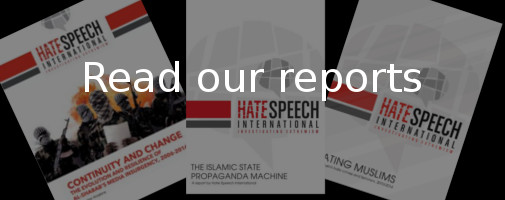
 Print Friendly
Print Friendly




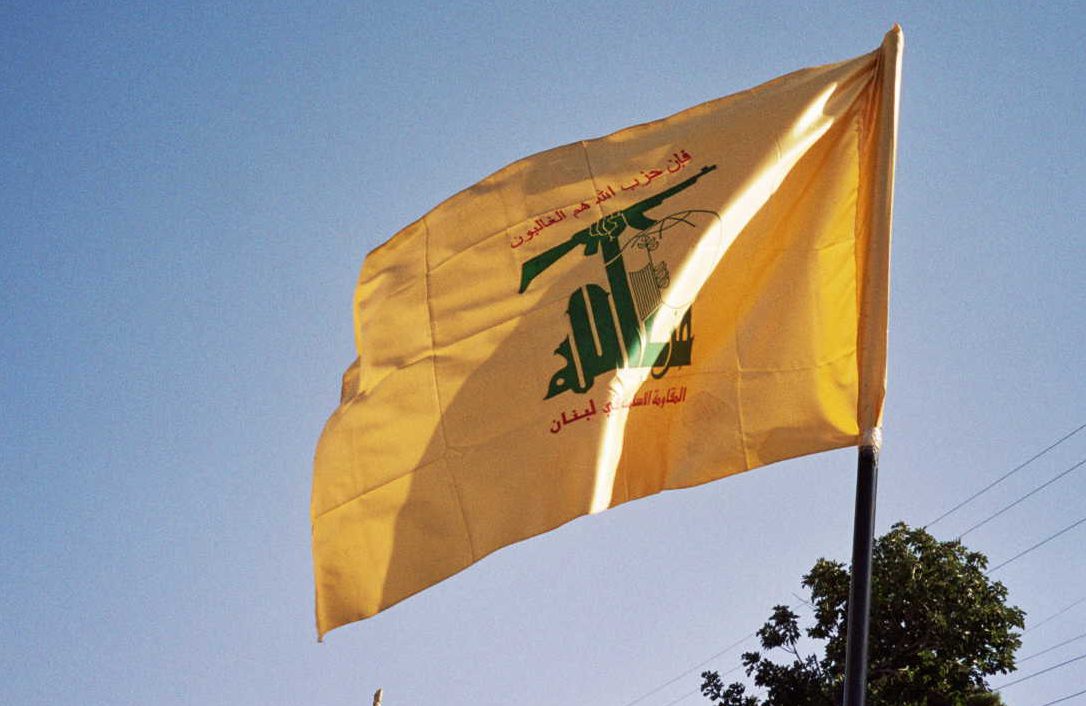
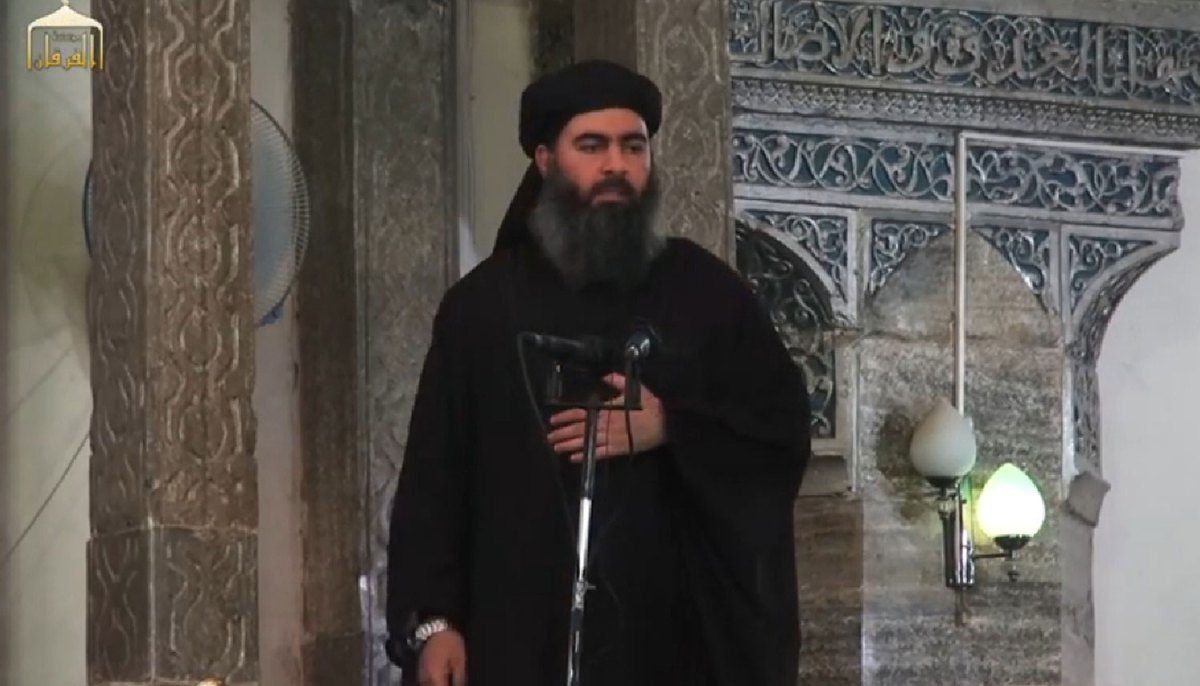
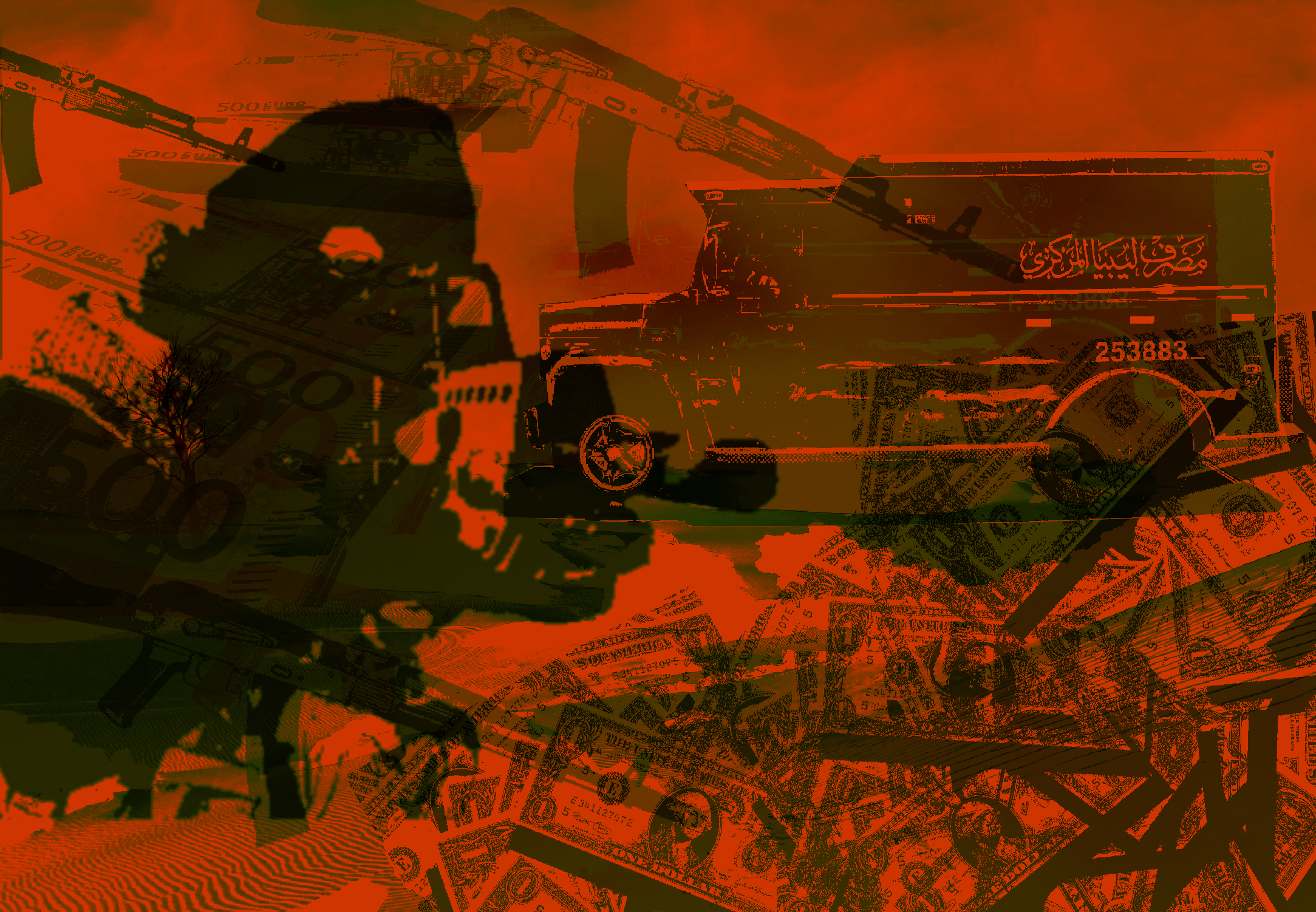
No comments yet.